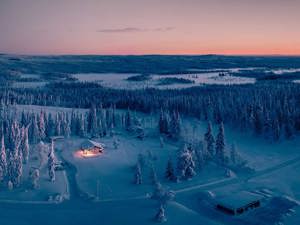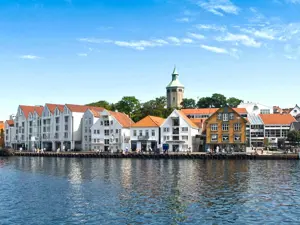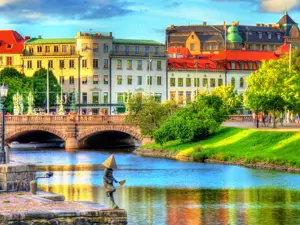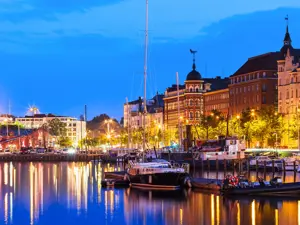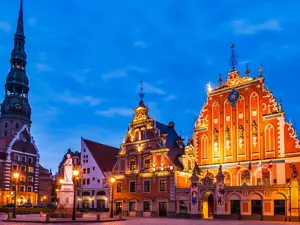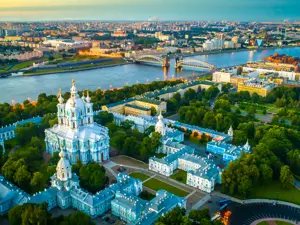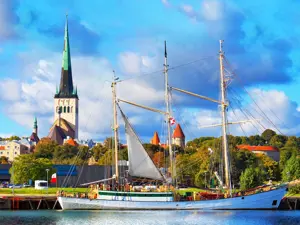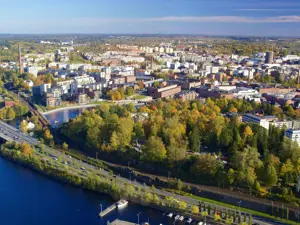A celestial spectacle with enchanting colors
One of the most astonishing natural phenomena offered by our planet is the Polar Aurora, which appears at the two magnetic poles of the Earth: the North Pole and the South Pole. The lights and colors of this luminous display are called "Auroras," and depending on where they appear, they are known as the "Aurora Borealis" or "Northern Lights" at the North Pole and "Aurora Australis" or "Southern Lights" at the South Pole.
The name "Aurora Borealis" was coined by the astronomer Galileo Galilei, who combined "Aurora" (the name of the Roman goddess of dawn) with "Borea" (the name of the North Wind god in Greek mythology).

Aurora Borealis Photo: Copyright © Visit Finland
The Northern Lights are a breathtaking display of vibrant lights in the nighttime sky. These lights are created by the collision of charged particles from the Sun with the Earth's atmosphere, resulting in a mesmerizing dance of colors.
Usually, the Northern Lights are visible at high latitudes, but if solar activity is strong, and more particles reach the Earth's magnetosphere, and sometimes, a "magnetic storm" caused by intense solar spot activity can extend to even mid-latitudes.
The Polar Aurora can take on various colors and forms. The main factors that influence the colors of the auroras are three: the gases in the atmosphere, the altitude at which they develop, and the energy of the solar wind particles.

Aurora Borealis Photo: Copyright © Visit Finland

Aurora Borealis Photo: Copyright © Visit Finland
The most common color is green, emitted by oxygen hit by high-energy incident electrons (in the lower layers of the atmosphere), while oxygen emits red light when hit by low-energy incident electrons. Nitrogen usually produces blue light. The blending of green, red, and blue can lead to the appearance of other color variations such as purple, pink, yellow, and white. Regarding the shape, the auroral glow can appear in small patches of striped light, arches, undulating bands, or rays.
Undoubtedly, this celestial phenomenon has fascinated and inspired humanity for centuries, with many aspiring to witness it to fulfill a dream, planning trips in search of this extraordinary event of light in the sky. While its manifestation is not guaranteed, you can travel to special destinations where you can observe the Northern Lights.

Aurora Borealis Photo: Copyright © Visit Finland
Witnessing the Northern Lights is undoubtedly a magical and astounding experience. Planning a trip to contemplate this natural wonder creates unique and indelible memories.
For an unforgettable Northern Lights sighting, it's essential that the sky is clear with good visibility, so it's advisable to check the weather forecast continually and get away from city light pollution to get the best view. Patience is necessary while waiting for the magical moment, knowing you'll have to spend a night outdoors, even in the coldest months. It's often a good idea to rely on an expert guide by choosing a guided Aurora Borealis tour, as they can select the best location among the various Aurora Basecamps, combining the experience with stories about the history, folklore, and science of this celestial phenomenon. It's essential to bring a camera to capture the moment of these magnificent lights and embark on an extraordinary adventure in the deep darkness of the night, filled with the bright and colorful cosmic dance.
Text by Alisè Vitri, Avion Tourism Magazine
Photos: Copyright © Sisterscom.com / Depositphotos
Photo: Copyright © Visit Finland
WHERE TO SLEEP TO SEE THE NORTHERN LIGHTS
 Aurora Borealis at Lofoten Islands, Norway Photo: Copyright © Sisterscom.com / Depositphotos
Aurora Borealis at Lofoten Islands, Norway Photo: Copyright © Sisterscom.com / DepositphotosInfinite possibilities for staying in facilities equipped with every service.
To find the ideal hotel or accommodation with the best offers you can do a search by choosing the country and places of interest.
ALASKA
CANADA
FINLAND
ICELAND
WHERE AND WHEN TO SEE THE NORTHERN LIGHTS
The best destinations to see the Northern Lights include countries near the Arctic Circle, around the North Pole. The best observation period is during the winter when the nights are longer and, generally speaking, the months from September to March, depending on the observation locations. However, in some areas, it is possible to see it from the end of August until the beginning of April.
Alaska (USA)

Photo: Copyright © Sisterscom.com / Depositphotos
Alaska offers some of the best places to witness the Aurora Borealis, especially in the northern regions where there are large, dimly lit areas.
The ideal period to spot it is between August and April. Among the main destinations to admire it at its best are: Fairbanks, Coldfoot, Wiseman, Utqiagvik (Barrow) and Prudhoe Bay/Deadhorse.
Canada

Photo: Copyright © Sisterscom.com / Depositphotos
Places like the Yukon Territory, Yellowknife, the Northwest Territories, Churchill, Iqaluit, Jasper National Park and Prince Edward Island offer great viewing spots for the Aurora Borealis in northern Canada.
The best times to observe the Aurora Borealis in Canada are from mid-August to mid-October and then from December to April.
FINLAND

Photo: Copyright © Sisterscom.com / Depositphotos
Finnish Lapland is an incredible place to observe the Aurora Borealis. Destinations such as Rovaniemi (also known as the "Gateway to the Arctic" or the city of Santa Claus), Ivalo and Inari in Northern Finland are known for observing this wonder of Nature.
The most suitable season in Northern Finland is from late August to April, autumn and winter. Other great observation spots in Finland are Luosto, Kilpisjärvi and Levi.
ICELAND

Photo: Copyright © Sisterscom.com / Depositphotos
This Nordic island nation is another great destination to see the Aurora Borealis, especially in winter and from October until March. Rural areas, such as North and West Iceland, offer the best views. Ideal areas for observation include: Reykjavik and its surroundings, the Thingvellir Region with its National Park, the Snæfellsnes Peninsula, the Landmannalaugar mountain area, the Myvatn region, the Vestrahorn mountain and the Jokulsarlon Glacier Lagoon.
NORWAY

Photo: Copyright © Sisterscom.com / Depositphotos
Northern Norway is a popular destination for viewing the Northern Lights. The best season to see it is spring (March/April) and autumn (September/October). Among the most popular places in Norway to see the Northern Lights are in particular Tromsø (often called the "Capital of the Northern Lights"), Alta, Kirkenes, the Lofoten Islands, Nordkapp (North Cape), the Svalbard Islands, the Trøndelag region, Varanger, Narvik, Helgeland, Vesteralen, Bodo, the Lyngenfjord region, the Vega islands, Senja and Central Troms and the island of Senja.
SWEDEN

Photo: Copyright © Ente del Turismo Finlandese
Northern Sweden offers perfect views of the Northern Lights across the country, all the way to the southern tip of Scania. The best season is winter or from September to the end of March.
The best areas in Sweden where there is the possibility of seeing this natural spectacle are: Abisko and its National Park, Kiruna, Lake Torneträsk, Swedish Lapland (Jokkmokk, Gällivare and Kiruna), Luleå and Hemavan.
RUSSIA

Photo: Copyright © Sisterscom.com / Depositphotos
Several regions in Russia offer the opportunity to admire beautiful views of the Northern Lights. The ideal period is winter or from September to early April.
Among the main observation points are: the Murmansk and Kola peninsulas, the Solovki Islands archipelago in the White Sea, the Nenets Autonomous Okrug region, Yakutsk and the Republic of Sakha (Yakutia).
Recommended tours and excursions to see the Aurora Borealis
News & Useful info
You might be interested in
Destinations found in the vicinity
Other destinations



